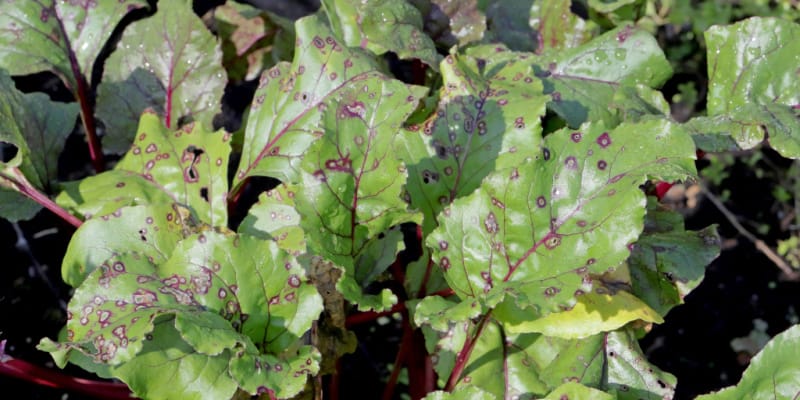
Cercospora Leaf Spot – Prevention and Treatment
Our site is reader supported, this means we may earn a small commission from Amazon and other affiliates when you buy through links on our site.
What is Cercospora Leaf Spot?
Cercospora Leaf Spot is a fungal disease that, fortunately, will not prove fatal to your plants. However, it does spread rather quickly and often appears to be more problematic for plants growing in shady positions. I have personally noticed the disease quite frequently on Hydrangeas, some examples include the smooth, panicle, oakleaf and bigleaf types of Hydrangea.
How to recognise Cercospora Leaf Spot
This disease first appears on the underside of older leaves as irregular brown spots that might have halos around them. You may also notice small purple spots (on the older leaves) that evenly grow and have a grey centre with purple edges. Check particularly the leaves at the bottom of the plant, as well as the flowers and the stems.
The leaves eventually turn yellow, wilt and fall off the plant. Without the energy produced by the leaves, the plant may lose all its foliage in very severe cases, despite this, it is never really fatal.
What can you do about it?
Prevention
Use a general fungicide on your plants in the spring to help prevent any diseases, including this particular leaf spot. It often begins to make an appearance around July, through until October.
Make sure your plant is in the best growing environment for it. That’s usually a sunny but sheltered location with well-drained soil. Cercospora Leaf Spot often thrives in moist conditions in shaded areas of the garden, which is why Hydrangeas are commonly affected by this disease. They are the happiest growing in the same spot where Cercospora thrives.
We always recommend watering the base of your plants rather than from above because the water can remain on the leaves.
Treatment
Remove any infected leaves as soon as you notice them. You may need to prune the plant back quite aggressively if it’s heavily infected, being aware that this harsh pruning may also affect flowering the following year. Thoroughly wash your hands and any tools that come into contact with the infected parts of the plant.
Start using an organic fungicide of copper sulphate or potassium carbonate as soon as you notice the problem.
If organic fungicides don’t do the job, move on to chemical ones. A general fungicide labelled for black spot seems to have helped my own plants in the past. But use these carefully because they don’t kill selectively; they destroy everything they come into contact with. It’s best to use these fungicides when your plant’s blooms have faded.